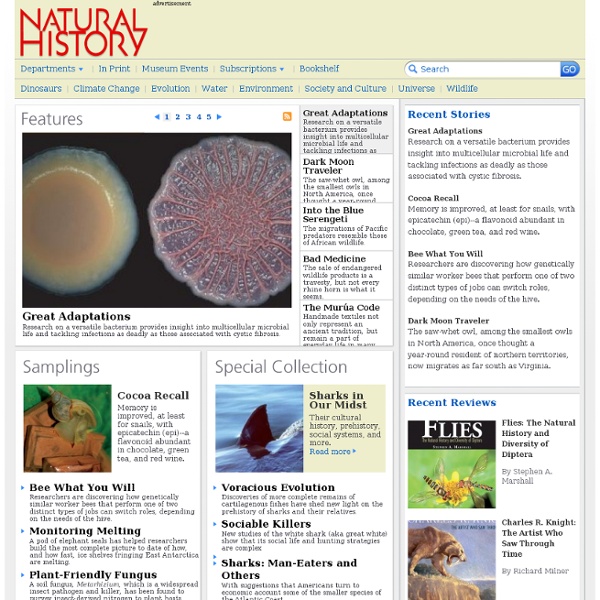



Magazine - Table of Contents The Thirteenth Amendment forbade slavery and involuntary servitude, “except as punishment for crime whereof the party shall have been duly convicted.” Crops stretch to the horizon. Black bodies pepper the landscape, hunched over as they work the fields. To the untrained eye, the scenes in Angola for Life: Rehabilitation and Reform Inside the Louisiana State Penitentiary, an Atlantic documentary filmed on an old Southern slave-plantation-turned-prison, could have been shot 150 years ago. The film tells two overlapping stories: One is of accomplishment against incredible odds, of a man who stepped into the most violent maximum-security prison in the nation and gave the men there—discarded and damned—what society didn’t: hope, education, and a moral compass.
History Net Science News, Articles and Information | Scientific American History and Geography of Europe The Trouble with 'The Testament of Mary' May is the month in which the church honors Mary; by happy coincidence, it is also the month when secular culture honors mothers. According to the Bible, Mary’s role in salvation history is small but mighty. Through the agency of the Holy Spirit, she conceives the Messiah, gives birth to Jesus and raises him to adulthood. She appears at a few key moments in Christ’s ministry—searching frantically for him and finding him teaching in the temple; urging him to assist the hapless hosts at Cana; and, finally, standing vigil beneath the cross. Admittedly, this isn’t much to go on. A new, and highly unorthodox, depiction of Mary has been in the public eye of late, the Irish writer Colm Toíbín’s play “The Testament of Mary.” I greeted the publication of the novella with enthusiasm and attended the play as soon as I could get a ticket. And here is where Colm Toíbín lost me. UPDATE: America contributor Rob Weinert-Kendt weighs in on the "The Testament of Mary" here.